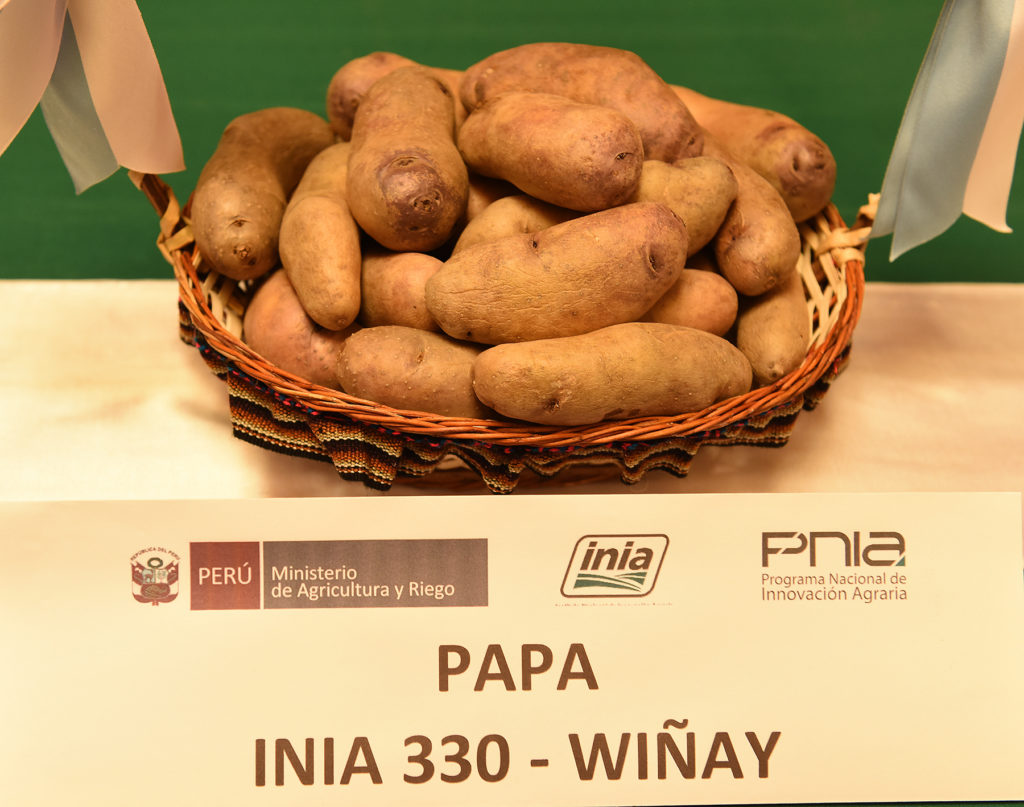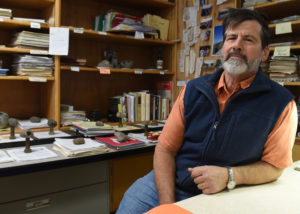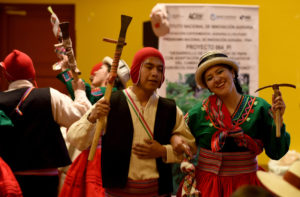
Frost-resistant potato developed by Wisconsin, Peruvian researchers
A partnership between researchers from the University of Wisconsin-Madison and Peru have developed a new frost-resistant potato variety.
John Bamberg, Alfonso del Rio and Jiwan Palta from UW-Madison collaborated with researchers from Peru’s International Potato Center and the Instituto Nacional de Innovacion Agraria (INIA) and Peruvian growers to develop the Wiñay. The variety will be used by Peruvian farmers in the land that gave the world the potato.
Wiñay means “to grow” in Quechua, one of Peru’s indigenous languages.

The frost-resistant potato is long and thin with brown skin and yellow flesh and it’s grown for Peru’s fresh market. It was developed to be cultivated in Peru’s Altiplano region at elevations up to 14,000 feet above sea level.
Palta, a professor of horticulture and plant physiologist with the Plant Breeding and Plant Genetics program, said that many of the wild potato varieties found in the Altiplano are naturally hardy and can tolerate temperatures down to 14 degrees Fahrenheit. However, these potatoes are small and have a bitter taste due to high levels of chemical compounds called glycoalkaloids.
The need for a hardier, less bitter, frost-resistant potato in Peru’s highlands stems in part from climate change, according to both Palta and del Rio, a senior scientist in charge of the U.S. Potato Genebank research lab at UW. According to Palta and del Rio more frequent late-season killing frosts are causing greater yield losses for Peru’s farmers.
However, developing a new potato variety to withstand such conditions is a time-consuming project, one that typically requires 10 to 15 years to bring to fruition. The devil can be in the genetic details when crossing potato varieties to develop a new variety.
Bamberg, director of the USDA Agricultural Research Service’s U.S. Potato Genebank in Sturgeon Bay, Wisconsin, and a professor of horticulture, compares the process to looking for a needle in a haystack.
“Sorting out the offspring, you get a bewildering number of possibilities to select from,” Bamberg said. “Breeders put out thousands and thousands of progeny and select from them over decades to find that one better one.”
Trial and error
The project began in 2005 using progeny of a Wisconsin potato clone that had good frost tolerance, yield, tuber size and eating quality. The clone carried the genes for frost hardiness from a wild potato species called Solanum commersonii, which can survive temperatures as cold as 14oF. The progeny of this clone was selected in Wisconsin, but, when tested in frost-prone areas of the Peruvian Highlands, it didn’t perform well because the Peruvian summer days are shorter than in the Midwest.
“So Jiwan, John and I discussed using some of the Peruvian potatoes we have in the collection at Sturgeon Bay,” del Rio said.
They subsequently chose seven Peruvian varieties. After crossbreeding with the Wisconsin frost-hardy clone, they sent about 20,000 seed potatoes to Peru for field trials at the INIA research station in the southern city of Puno. That was the first year of the project. With each passing year, they evaluated new progeny for the preferred qualities and traits and narrowed the pool until arriving at the one potato that came to be Wiñay.
After 10 years of field trials, going through the culling process, determining the final variety selection and the naming of the potato, there comes a time to celebrate.

In November 2018, in Puno, near the shoreline of Lake Titicaca, del Rio, Palta, and Palta’s wife, Mari, participated in the public introduction and celebration of the Wiñay potato.
More than 200 students, farmers, producers, scientists, and industry and government officials attended the four-hour fête, which concluded with the distribution of Wiñay potatoes in brown paper bags to all in attendance. Both Palta and del Rio found the ceremony to be an enjoyable opportunity to recognize everyone’s hard work.
“It’s always heartening to see the end result of your labor,” Palta said. “Research by definition means you search again and again. Sometimes you hit a winner and, in this case, we have a winner that is desirable. Scientists (in Peru) have evaluated and feel good about it.”
Along with the practical side of the potato ceremony, del Rio said there is a spiritual appreciation of the potato’s role in Peruvian villages.
“The farmers receiving the potatoes, they appreciate whatever comes from Mother Earth, and potatoes have been such an important part in the life of these communities that they appreciate it very much,” he said.














